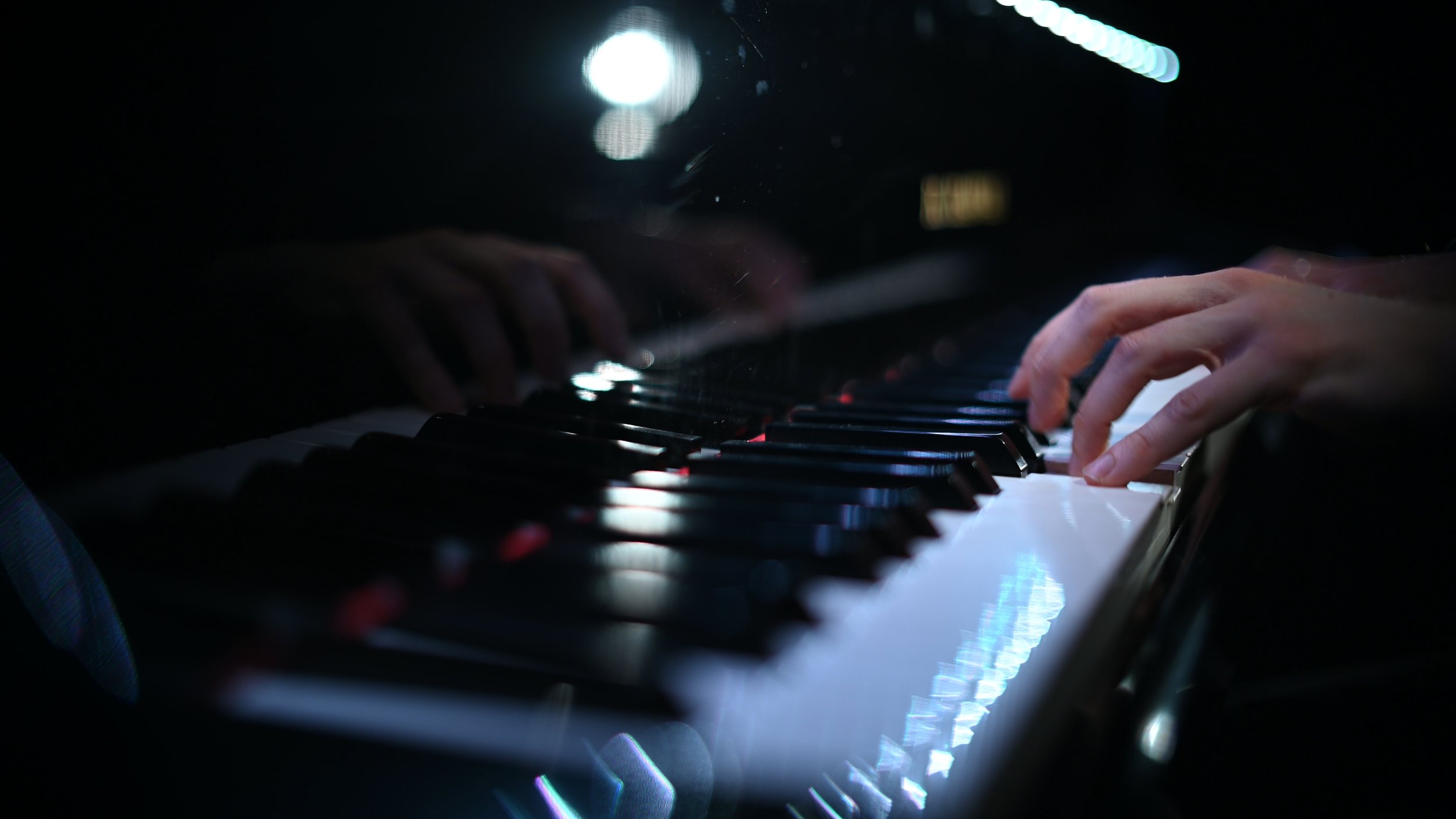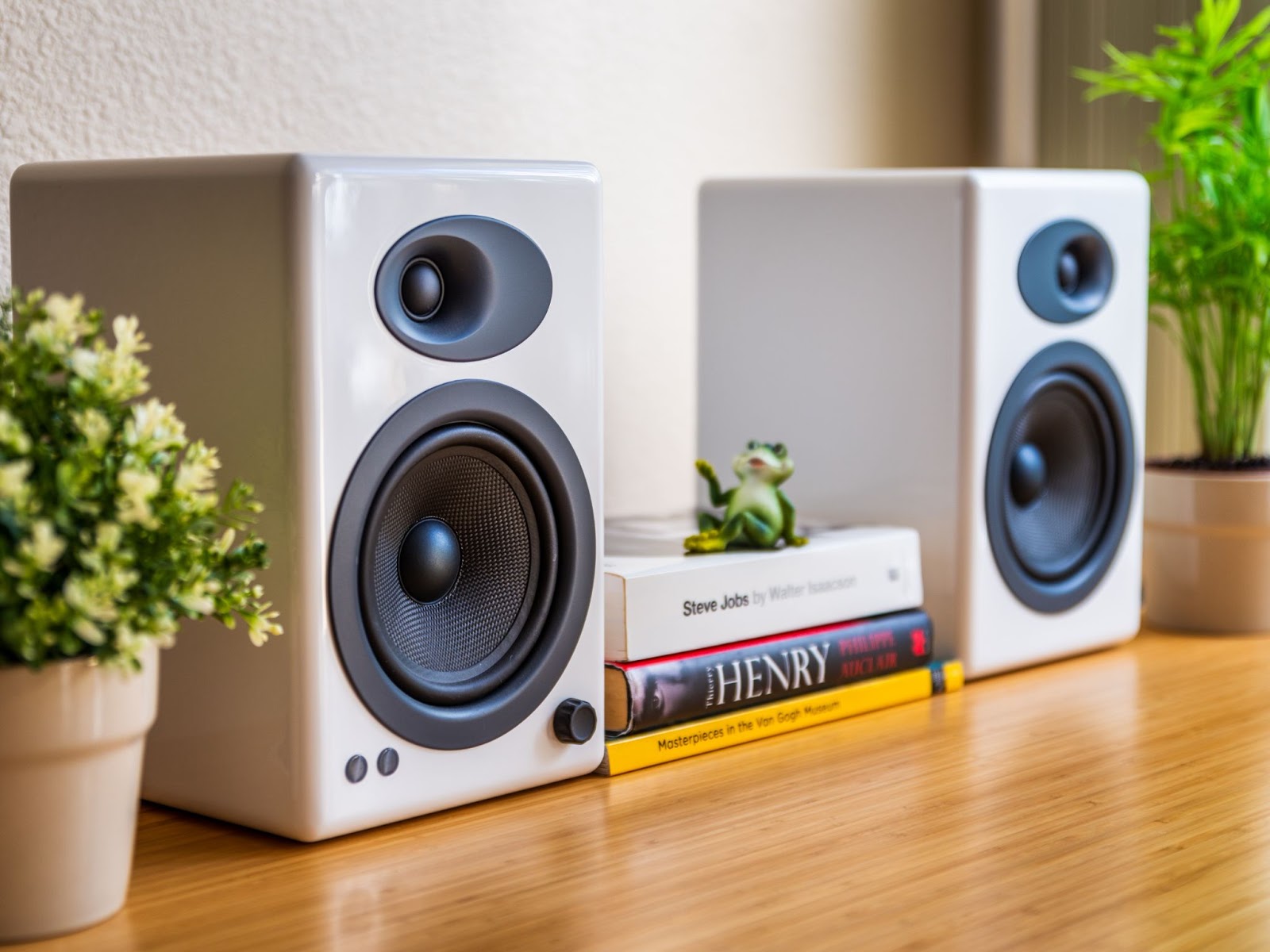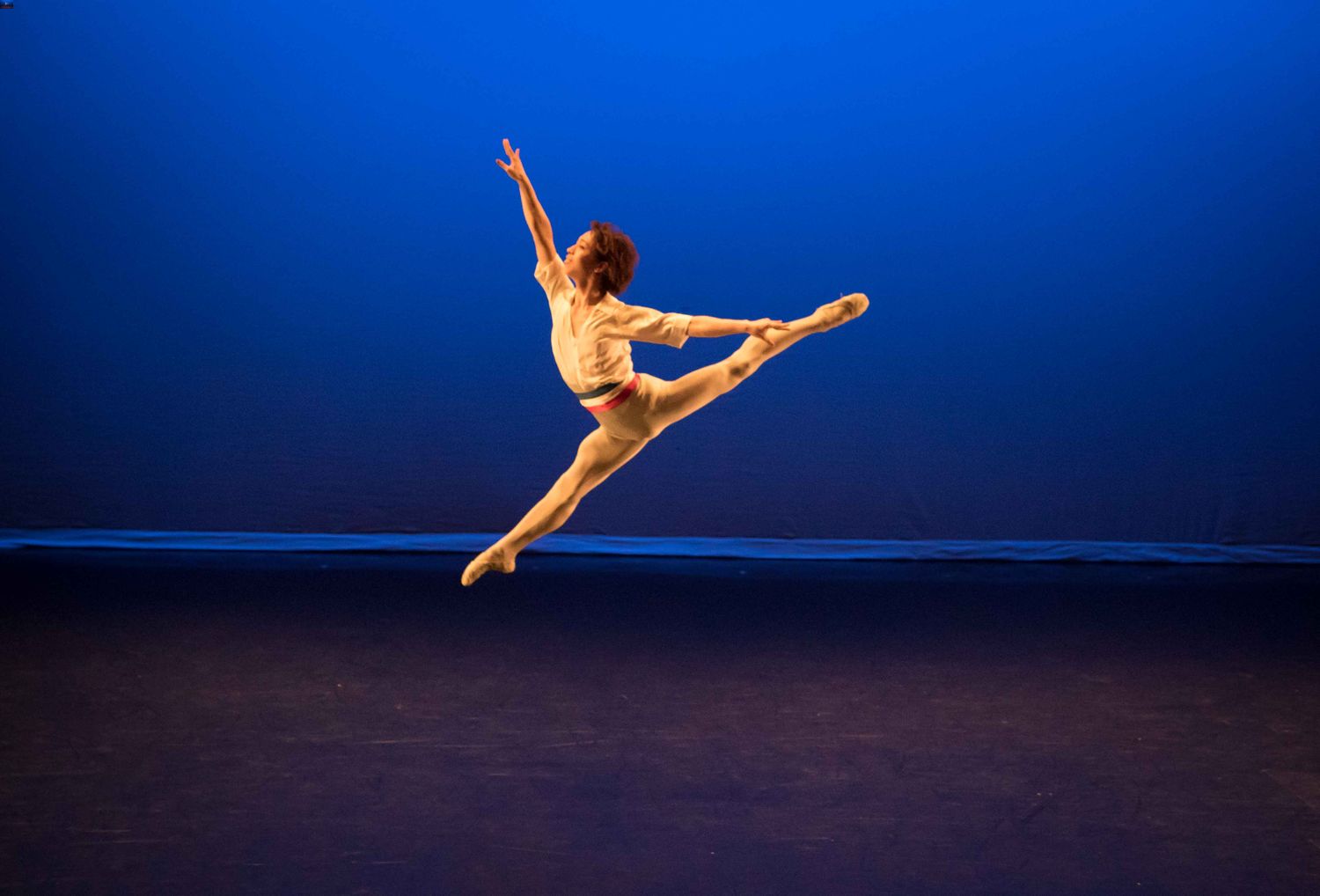Home>Production & Technology>MIDI>What Is MIDI Mean?


MIDI
What Is MIDI Mean?
Published: February 19, 2024
Discover the meaning of MIDI and its significance in music production. Learn how MIDI technology revolutionizes the way music is created and performed.
(Many of the links in this article redirect to a specific reviewed product. Your purchase of these products through affiliate links helps to generate commission for AudioLover.com, at no extra cost. Learn more)
Introduction
MIDI, which stands for Musical Instrument Digital Interface, is a powerful and versatile tool that has revolutionized the way music is created, performed, and recorded. It serves as a universal language for electronic musical instruments, computers, and other audio equipment, allowing them to communicate and synchronize with each other seamlessly.
MIDI has significantly impacted the music industry, enabling musicians, composers, and producers to unleash their creativity and produce high-quality music with unprecedented precision and flexibility. Whether it's composing a symphony, producing electronic dance music, or performing live on stage, MIDI has become an indispensable part of modern music production.
In this article, we will delve into the fascinating world of MIDI, exploring its history, functionality, and diverse applications. By understanding the inner workings of MIDI and its pivotal role in music production, you will gain a deeper appreciation for the technology that has transformed the landscape of music creation and performance. So, let's embark on a journey to unravel the mysteries of MIDI and uncover its profound impact on the world of music.
History of MIDI
The history of MIDI dates back to the early 1980s when there was a pressing need for a standardized protocol that could enable electronic musical instruments from different manufacturers to communicate with each other. Prior to the advent of MIDI, musicians faced considerable challenges when attempting to integrate various synthesizers, drum machines, and other electronic instruments into their setups. Each device operated on its own proprietary system, making it arduous to synchronize and control multiple instruments simultaneously.
In response to this dilemma, a group of visionary engineers and music industry leaders came together to develop a solution that would streamline the integration of electronic musical instruments. Their collaborative efforts culminated in the creation of the Musical Instrument Digital Interface, which was officially unveiled in 1983. This groundbreaking protocol represented a significant milestone in the evolution of music technology, as it provided a standardized means for electronic instruments to communicate and exchange musical information.
The MIDI standard was designed to facilitate the transmission of various types of data, including note-on and note-off messages, control changes, pitch bend, modulation, and more. This comprehensive set of commands allowed musicians to exert precise control over their instruments, enabling them to produce expressive and dynamic performances with unparalleled accuracy.
One of the key advantages of MIDI is its universality, as it transcends the limitations of specific hardware or software platforms. This means that a MIDI-compatible keyboard from one manufacturer can seamlessly communicate with a MIDI-enabled synthesizer or computer from another brand, fostering a cohesive ecosystem where diverse musical devices can interact harmoniously.
Over the years, MIDI has undergone several advancements and refinements, adapting to the evolving needs of musicians and producers. The introduction of MIDI 1.0 laid the foundation for the widespread adoption of MIDI technology, revolutionizing the way music is created and performed. Subsequent iterations, such as MIDI 2.0, have further expanded the capabilities of MIDI, introducing enhanced features and improved performance.
In essence, the history of MIDI is a testament to the transformative power of innovation and collaboration within the realm of music technology. By establishing a standardized protocol for electronic musical instruments, MIDI has empowered musicians to explore new frontiers of creativity, enabling them to unleash their artistic vision with unprecedented precision and versatility. As we continue to embrace the boundless potential of MIDI, its legacy remains deeply ingrained in the fabric of modern music production, serving as a testament to its enduring impact on the art of sound.
How MIDI Works
At its core, MIDI operates on a remarkably straightforward principle, facilitating the transmission of musical data between various electronic devices. When a musician plays a MIDI-compatible instrument, such as a keyboard or drum pad, the performance data is captured in the form of MIDI messages. These messages encompass a wide array of musical information, including note-on and note-off commands, velocity, pitch, modulation, and control changes.
Upon generating these MIDI messages, the instrument sends the data to a MIDI-enabled device, such as a synthesizer, computer, or digital audio workstation (DAW). The recipient device interprets the incoming MIDI messages and translates them into audible sounds, effectively reproducing the musical performance with remarkable precision.
One of the key advantages of MIDI is its non-audio nature, as it solely focuses on transmitting musical instructions rather than actual sound waves. This distinction empowers musicians and producers to exert granular control over every aspect of a musical performance, ranging from note dynamics to timbral variations, without being confined to the sonic characteristics of a specific instrument.
Furthermore, MIDI supports polyphonic capabilities, allowing multiple notes to be played simultaneously and transmitted as distinct MIDI messages. This feature enables the seamless reproduction of complex musical arrangements, encompassing harmonies, chords, and intricate melodies with utmost fidelity.
In addition to note-based commands, MIDI encompasses a diverse range of control messages that govern various parameters of musical expression. This includes modulation wheel data, which influences the timbral nuances of a sound, as well as pitch bend information, enabling fluid and expressive pitch variations.
Moreover, MIDI facilitates the transmission of system-exclusive (SysEx) messages, which are utilized for configuring and controlling specific parameters of MIDI-compatible devices. This functionality grants musicians and sound designers the flexibility to customize the behavior and settings of their instruments, tailoring them to suit their creative vision.
As MIDI messages traverse between interconnected devices, they do so with minimal latency, ensuring that musical performances remain responsive and devoid of perceptible delays. This real-time communication capability is crucial for live performances and interactive music applications, where instantaneous feedback and seamless synchronization are paramount.
In essence, the elegance of MIDI lies in its ability to serve as a conduit for musical expression, transcending the confines of individual instruments and empowering musicians to craft immersive sonic experiences with unparalleled precision and versatility. By understanding the inner workings of MIDI and its seamless data exchange mechanisms, we gain a profound appreciation for its pivotal role in shaping the landscape of modern music production.
Uses of MIDI
MIDI has permeated virtually every facet of the music industry, offering a myriad of applications that cater to the diverse needs of musicians, producers, and audio enthusiasts. Its versatility and adaptability have propelled it into the forefront of music creation, performance, and recording. Let's explore the multifaceted uses of MIDI that have reshaped the way music is conceived, produced, and experienced.
1. Music Composition and Arrangement
MIDI serves as a cornerstone in the realm of music composition, providing composers and songwriters with a powerful platform to craft intricate musical arrangements. Through MIDI sequencing software and digital workstations, composers can meticulously arrange musical elements, manipulate dynamics, and experiment with diverse instrumentations. This flexibility enables them to bring their musical ideas to life with unparalleled precision, laying the foundation for captivating compositions across various genres.
2. Live Performance and Playback
In the realm of live music, MIDI empowers performers to orchestrate complex arrangements seamlessly. By utilizing MIDI controllers and interfaces, musicians can trigger pre-programmed sequences, control sound modules, and synchronize lighting and visual effects with their performances. This integration of MIDI technology enhances the immersive nature of live shows, enabling artists to deliver captivating and dynamic performances that captivate audiences.
3. Sound Design and Synthesis
MIDI plays a pivotal role in sound design and synthesis, allowing sound designers and electronic musicians to sculpt and manipulate sonic textures with unparalleled precision. By leveraging MIDI-compatible synthesizers and samplers, artists can modulate parameters, sculpt timbres, and create evocative soundscapes that transcend conventional sonic boundaries. This capability fuels innovation in electronic music, enabling artists to push the boundaries of sonic experimentation.
4. Studio Recording and Production
Within the studio environment, MIDI revolutionizes the recording and production process, offering producers and engineers a powerful toolset for capturing and refining musical performances. MIDI interfaces seamlessly integrate with digital audio workstations (DAWs), enabling the recording of MIDI data alongside audio tracks. This integration facilitates precise editing, quantization, and manipulation of recorded performances, ensuring that every musical nuance is meticulously crafted to perfection.
5. Educational and Learning Tools
MIDI serves as an invaluable educational resource, empowering aspiring musicians and students to delve into the intricacies of music production and performance. MIDI keyboards, controllers, and software applications provide a hands-on approach to learning music theory, composition, and production techniques. This educational aspect of MIDI fosters creativity and innovation, nurturing the next generation of music creators and technologists.
6. Interactive Installations and Multimedia
MIDI's versatility extends beyond traditional music applications, finding relevance in interactive installations, multimedia presentations, and immersive experiences. By harnessing MIDI's capabilities, artists and technologists can create interactive art installations, synchronize audiovisual content, and craft immersive multimedia experiences that blur the boundaries between technology and artistic expression.
In essence, the uses of MIDI are as diverse as the creative individuals who harness its potential. From the intricacies of music composition to the dynamic realm of live performance and multimedia art, MIDI continues to shape the landscape of modern music and interactive experiences, cementing its status as a transformative force within the realm of audio technology.
MIDI in Music Production
MIDI stands as a cornerstone of modern music production, revolutionizing the way music is composed, recorded, and produced. Its seamless integration into the fabric of music production workflows has unlocked a realm of creative possibilities for producers, engineers, and artists alike.
Composition and Arrangement
In the realm of music production, MIDI serves as a fundamental tool for composing and arranging musical pieces. Through MIDI sequencing software and digital workstations, composers can craft intricate arrangements, manipulate musical dynamics, and experiment with diverse instrumentations. This flexibility empowers them to bring their musical ideas to life with unparalleled precision, laying the foundation for captivating compositions across various genres.
Virtual Instruments and Sampling
MIDI has facilitated the widespread adoption of virtual instruments and sample libraries within music production. By leveraging MIDI-compatible controllers and interfaces, producers can trigger and control virtual instruments and sample-based sound libraries with remarkable accuracy. This integration enables them to access a vast array of realistic sounds and textures, ranging from orchestral instruments to electronic synthesizers, expanding the sonic palette available for music production.
Automation and Control
One of the pivotal aspects of MIDI in music production is its capability to automate and control various parameters within a digital audio workstation (DAW). Producers can utilize MIDI data to modulate effects, adjust mix parameters, and manipulate virtual instrument articulations, enabling precise and dynamic control over the sonic characteristics of a musical composition. This level of automation enhances the intricacy and depth of music productions, elevating them to new heights of sonic expression.
Flexibility in Editing and Performance
MIDI's non-destructive nature empowers producers to edit and refine musical performances with unparalleled flexibility. Whether it's quantizing note timings, adjusting velocity levels, or fine-tuning pitch variations, MIDI data can be meticulously edited to achieve the desired musical expression. This level of precision ensures that every aspect of a performance can be tailored to perfection, enhancing the overall quality of music productions.
Hybrid Integration with Audio
MIDI seamlessly integrates with audio recording and processing, allowing for a hybrid approach to music production. By combining MIDI-triggered virtual instruments with live audio recordings, producers can achieve a harmonious fusion of electronic and organic elements within a production. This hybrid integration broadens the creative scope, enabling the incorporation of live performances alongside MIDI-driven compositions, resulting in rich and dynamic musical experiences.
In essence, MIDI's pervasive influence in music production transcends mere technical functionality, encompassing a realm of creative empowerment and sonic innovation. As the landscape of music production continues to evolve, MIDI remains a steadfast ally, empowering producers and artists to push the boundaries of musical expression and craft immersive sonic landscapes that captivate audiences worldwide.











